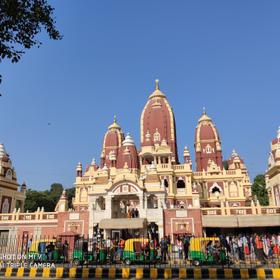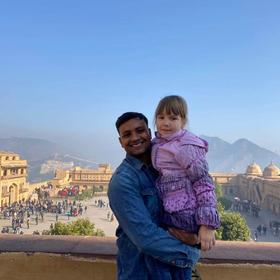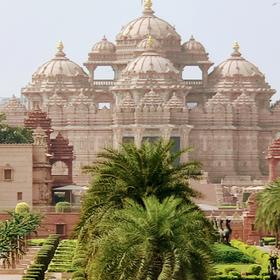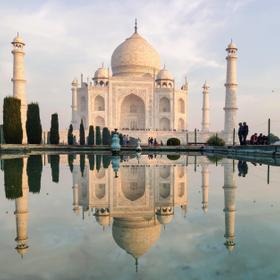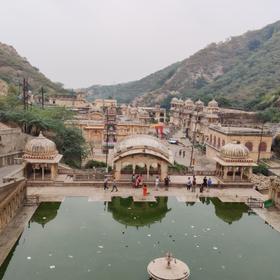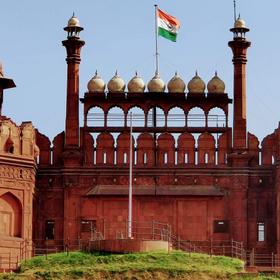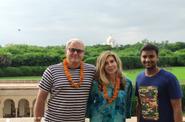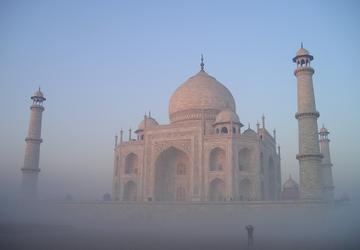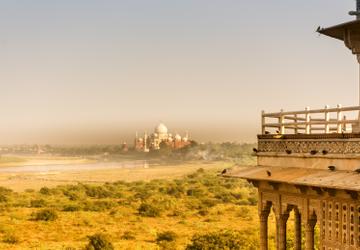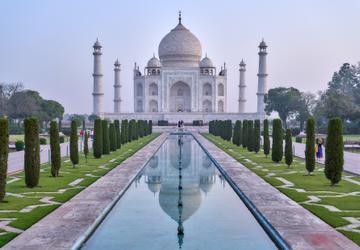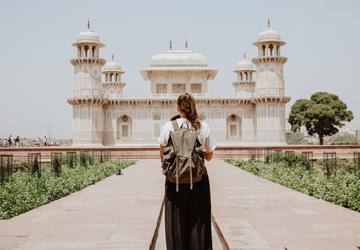Meeting with you at Delhi airpor - traditional welcome with garlands.
Delhi is a city of contrasts, home to almost 17 million people from different parts of India. The city is divided into a new and an old city. Both cities are completely different from each other.
Old Delhi is the heart of the city, where life rages according to the laws of the multimillion-dollar jungle and medieval exoticism. Old Delhi was once called New Delhi and this was in the 17th century.
It was designed by Emperor Shah Jahan as the new capital of the Mughal Empire and named it Shahjahanabad. Multifaceted, multifaceted, contrasting - these epithets are suitable for many cities in the world, but especially for Delhi.
You will see the color of the city and modern skyscrapers in New Delhi.
What will you see
Jami Mosque: Built under the orders of the fifth Mughal Emperor Shah Jahan, Jami Mosque is one of the largest mosques in India.
Chandni Chowk: The Chandni Chowk area was designed by the eldest daughter of Emperor Shah Jahan to attract traders from different countries. Her name was Jahanara.
Red Fort: One of the outstanding architectural structures of Indian culture. The construction of the Red Fort in Delhi was completed in 1648.
This huge and at the same time beautiful structure was intended for the residence of the Mughal Emperor Shah Jahan.
After the colonization of India, the fortress housed an English garrison until 1947. Particular attention was paid to the beauty of the building.
Inside there were many palaces, pavilions, swimming pools, and green spaces, which generally make an impression even today. (we'll see from the street)
Sikh Temple: The temple is called gurudwara sis ganj sahib which is one of the main Sikh temples in Delhi. It was built in 1783 to commemorate the martyrdom of the ninth Guru of the Sikh religion, whose name was Guru Tag Bahadur.
Lotus Temple: The Lotus Temple is the main temple of the Bahai religion in India and neighboring countries, built in 1986. The temple is built in the shape of lotus color.
Akshardham Temple: Akshardham Temple Located in Delhi, the Akshardham temple complex is the largest Hindu temple in the world. Akshardham Temple has been included in the Guinness Book of Records.
Lunch: Lunch at one of the best restaurants in new Delhi.
President's House: The official residence of the President of India in New Delhi. Construction of the complex began in the 1910s, designed by the famous British architect Edwin Lutyens, and continued intermittently until 1929, although minor improvements continued until 1930.
India Gate: India Gate, originally called the All India War Memorial.
Agrasen Ki Baoli (Stepwell): Baolis are step wells that are more like swimming pools. They collect top groundwater and rainwater, which is then used all year round for drinking, bathing, washing, irrigation and other household needs.
Birla Temple: Lakshmi Narayan Mandir is a Hindu temple also known as Birla Mandir. The temple was built in honor of the goddess of happiness and abundance Lakshmi and Narayana, who is one of the incarnations of the god Vishnu.
Moving to Agra city
- The journey takes 3 hours
- Arrival in Agra by 20:00
- Hotel accommodation
- Night in Agra

